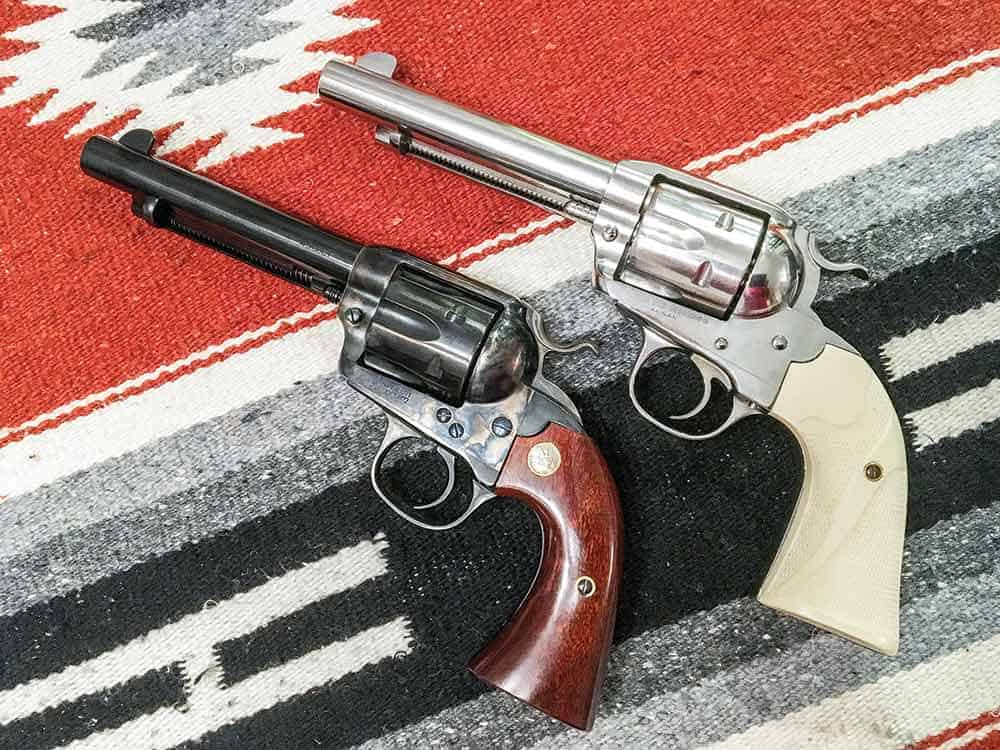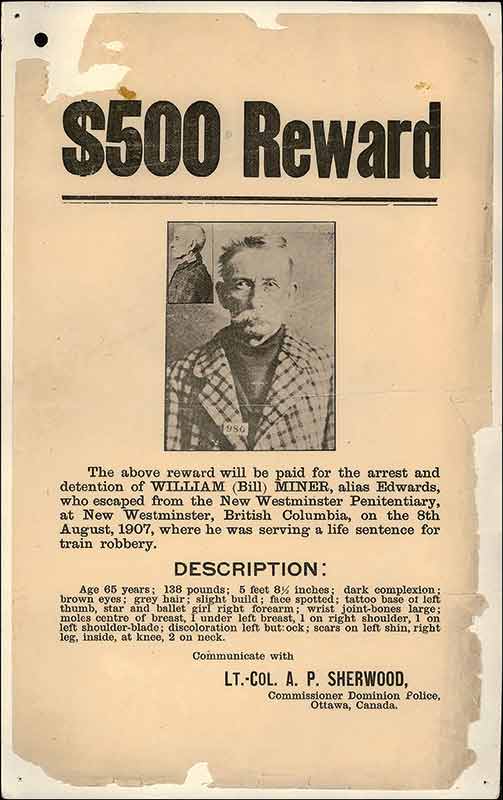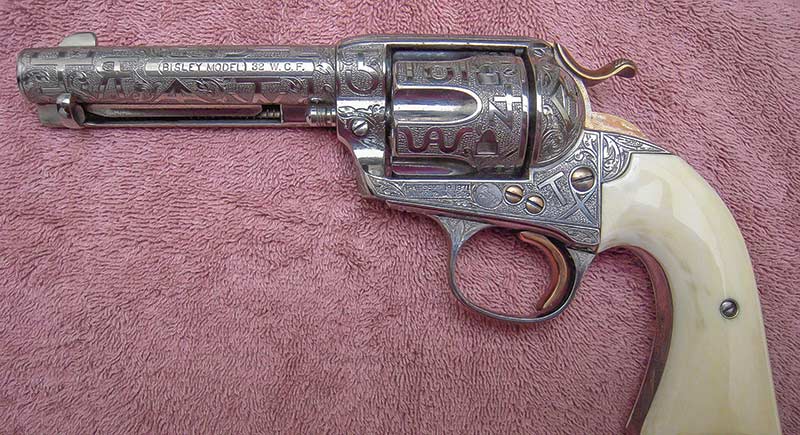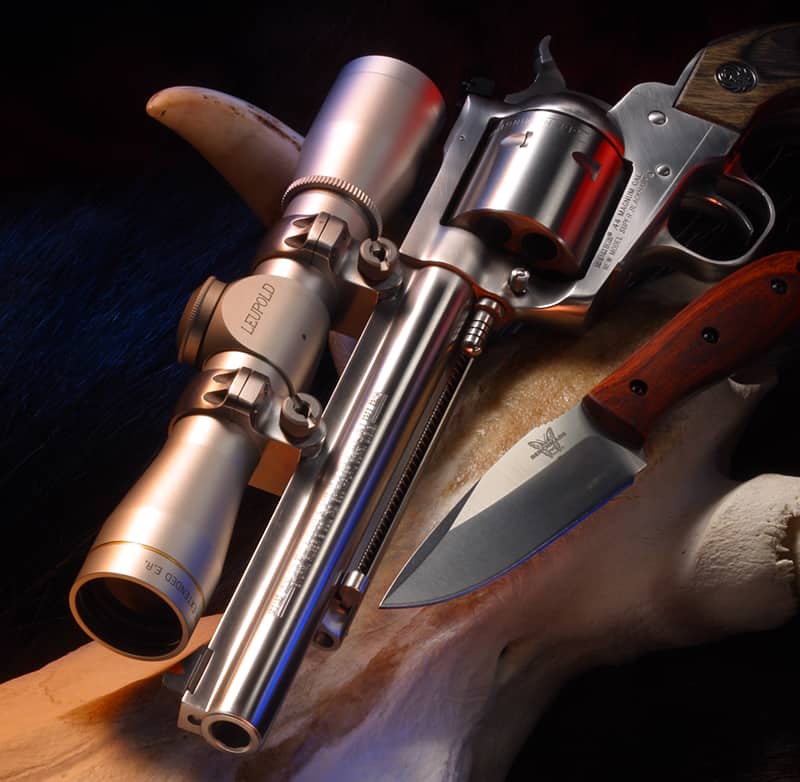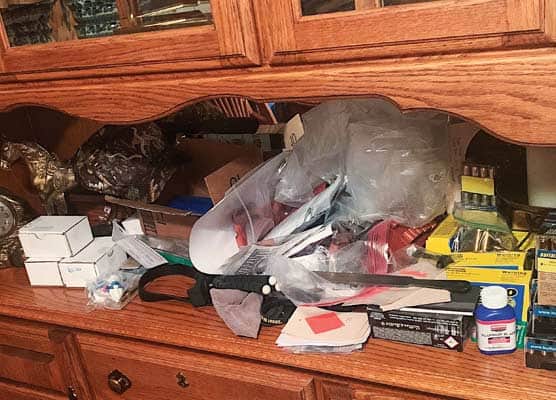The Bisley Revolver
A ‘Nearly British’ Peacemaker
She was bred from rugged stock to fill the demand for a refined tool in a challenging contest. Her lines and curves were familiar to countless men and women of the American West, yet she had a style echoing the elegance of the Victorian Era.
We’re talking about the Colt Bisley (1894-1912).
Built on the frame of the Colt Single Action Army, the Bisley was designed to meet the demands of shooters competing in the Bisley pistol matches in Great Britain.
The key differences were a lowered and wider hammer spur and distinctive humped, inward curving grips. While the lower and wider hammer spur make sense, one may wonder about the unusually shaped grips. Unlike the common straight-arm shooting styles, the recommended Bisley-style was to aim with the wrist and elbow bent.
Made for a Match
According to Hugh B.C. Pollard’s The Book of the Pistol and Revolver, the Bisley matches were a timed event with targets staged at 20 yards, then moved to 50 yards as contestants were thinned from the ranks. The contestant could use only one hand with no additional support from their body.
The targets themselves were timed and only visible during a three-second window. During those three seconds, the shooter had to raise the pistol from the shooting rail, aim and fire before the target disappeared again for three seconds. Only one shot was allowed during each appearance of the target and when the target disappeared, the pistol had to be lowered so it was touching a shooting rail. The recommendation was to practice the timing with a metronome.
Each match consisted of 12 shots. At 20 yards the shooter was given 60 seconds to fire six shots. At 50 yards the shooter was given 90 seconds.
Most Colt Bisley pistols went to Great Britain sporting maximum-length barrels of 7-1/2″ and adjustable rear sights but as semi-autos became popular, the single-action Bisley lost favor.
Pancho Villa
While a few Bisleys were shipped across the “Big Pond,” many more made their way west into the hands of cowboys, outlaws and lawmen and firearm historians say the majority of the Bisleys went to the arid Southwest. This may have been from the popularity of one well-known admirer — Pancho Villa.
The Mexican outlaw turned revolutionary had many followers on both sides of the borders. Freedom-loving cowboys from the U.S. flocked to his banner, fighting to overthrow the corrupt leadership that had a chokehold on Mexico. In their admiration for Villa, it stands to reason many of his followers would want similar guns.
Accounts say Villa owned several Bisleys and one now resides in the Autry Museum of the American West. It is a fine example of a 1912 Bisley Colt in .44-40, complete with heavily worn bluing, a faded color case hardened frame and custom mother-of-pearl grips.
While the Bisley’s unique styling may have attracted Villa, it may have been more of a need than a fashion statement. Some historians say Villa had arthritis in his hands and the Bisley grips were easier to hold than other grip styles of the day.
Audie Murphy
This held true for another famous admirer of the Bisley Colt, Audie Murphy. Murphy had problems gripping pistols due to injuries he had received during WWII and movie star Gary Cooper gifted Murphy a Bisley with custom grips to make it easier for the star to hold.
Colt’s records show the revolver was shipped to Tufts-Lion Arms Company in 1905, but left the factory chambered in .38-40 and with a 5-1/2″ barrel. Cooper had the gun refitted by Colt with a 7-1/2″ target barrel and rechambered to .45 Colt — Murphy’s favorite caliber. The Colt factory brought the pistol up to “presentation grade” with an ivory front sight insert and a lanyard ring. When completed, the gun had every appearance of those used in the Bisley matches 50 years earlier.
Cowboys, Lawmen
Other good guys liked the Bisley. Cowboy, lawman and writer Walter Rogers wore a Bisley across the arid plains and canyons of Texas. He preferred the Bisley grips as they allowed him to get off a faster first shot.
“In repeat shots, it is much slower than the Army Model,” Rogers wrote, “but it can be used with amazing speed on the draw and first shot, and is very accurate.”
The Bisley was designed for “duelist” or one-handed shooting but Rogers appeared to prefer using the “shootist” or two-handed style of shooting. As a result, he had the trigger spur modified higher to almost the same profile as the original Colt SAA.
The Colt Bisley found its way into many cowboy holsters such as John K. Rollinson’s who worked for the M-Bar Ranch in Wyoming in the 1890s. “We all carried guns. I remember that each of the six men had guns almost exactly alike,” Rollinson said. “We all preferred the Colt single-action six-shooter. Some liked the Bisley model, others the Frontier model.”
At the age of 19, Texas cowboy G.R. Tucker drifted into the pages of history as a “regulator” in the infamous Johnson County War of Wyoming in 1892. Tucker was part of the paid mercenaries from Texas sent to clean out the rustlers and squatters who infested the open range of north-central Wyoming. Working from a death list from the Wyoming Stock Growers Association, the regulators started their lethal work. After a few lopsided “battles,” the tables turned on the regulators when the local populace rose up in force and trapped the regulators on a remote ranch. Tucker managed to stay alive during the two-day siege until the U.S. Army arrived to quell the dispute.
Tucker drifted back south and became a U.S. Deputy Marshall, then Assistant Chief of Police in Ardmore until moving on to Ragtown during the oil boom in 1915. He must have fallen into a large sum of money because he purchased a nickel-plated Colt Bisley engraved by none other than Cuno Helfricht. The gun is stunning with mother of pearl grips sporting a steer head on the right side. It currently resides in the Autry Museum of the American West.
In the Movies
Some outlaws also favored the pistol. Bill Miner, known as the Grey Fox or the Gentleman Bandit, used a .41 Colt caliber Bisley in his later years. Miner gained his reputation as the Gentleman Bandit by being polite to those he was robbing and insisting his gang only shoot to kill as a last resort. Legend says Miner coined the phrase, “Hands Up!”
Miner started out robbing stagecoaches in California but was repeatedly caught and imprisoned. Starting over, Miner took on the alias George Edwards, moved to western Canada, and commenced robbing payroll trains. Miner was again caught and imprisoned, but escaped not long after.
In 1982 Richard Farnsworth starred in a movie of Miner’s life story. In it, Farnsworth used Miner’s original Colt Bisley.
Bisley lovers can also catch glimpses of its classic lines in the hands of Andy Clyde, better known as “California Carlson” in the Hopalong Cassidy matinees of the 1940s, and on the hip of Eli Wallach in The Magnificent Seven.
Colt Bisley revolvers can often be found at gun shows and online auctions. Best of all, they often are in better condition and cost less than Colt SAAs in the original configuration from the same time period!



